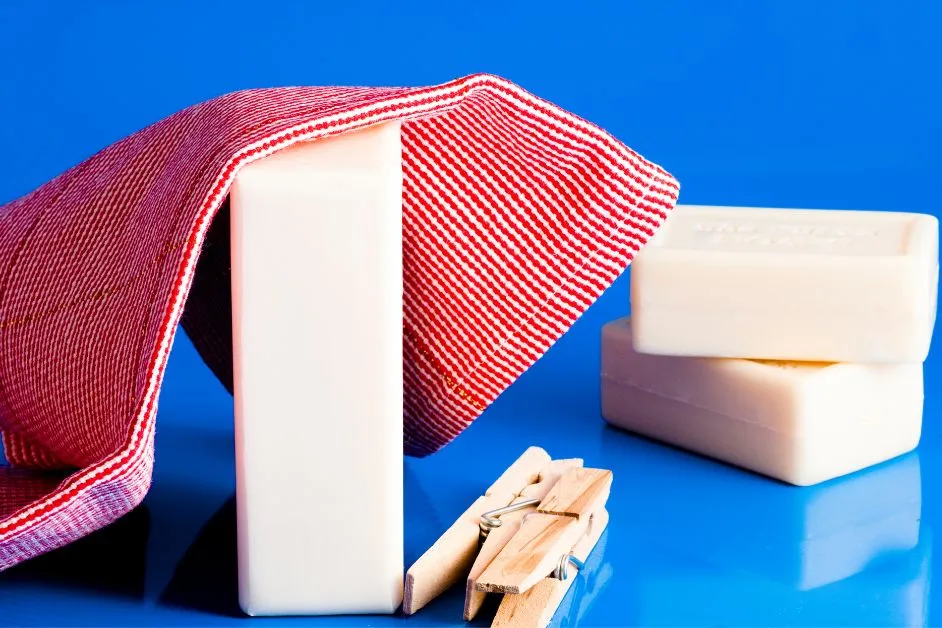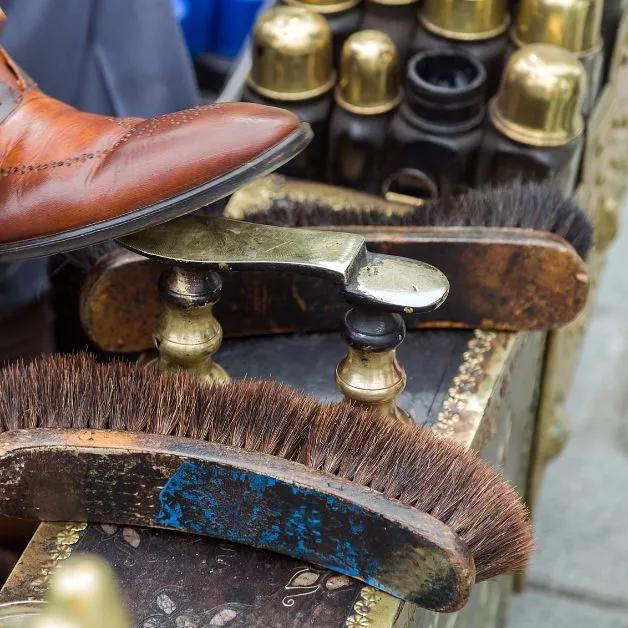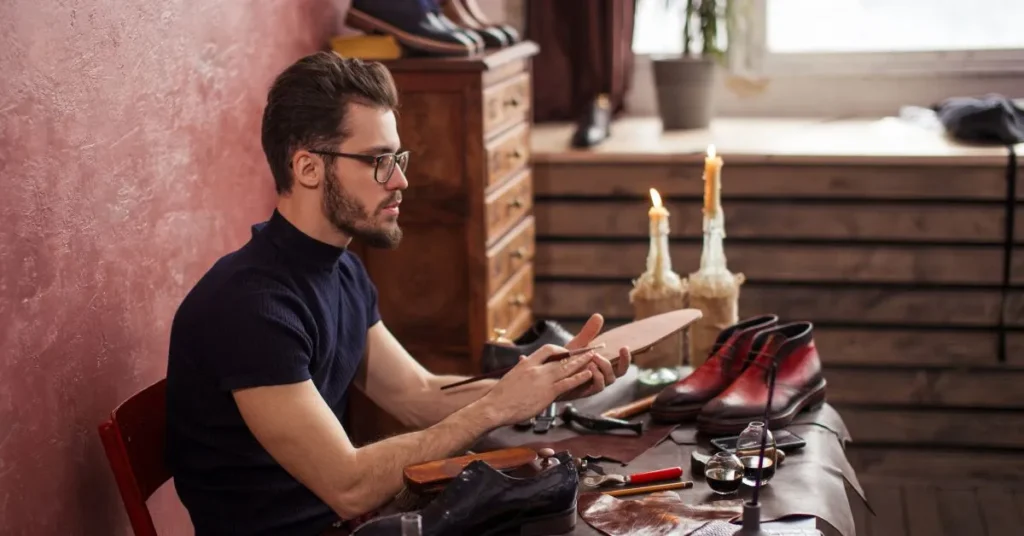To clean non-removable insoles, start by brushing off loose debris and gently scrubbing them with soapy water. Be sure to rinse thoroughly and air dry. For odor control, consider using a sprinkle of baking soda before reassembling your shoes. This routine helps maintain freshness and hygiene in your footwear.
Non-removable insoles can be a pain to clean, but it’s important to do so regularly to prevent the build-up of dirt, sweat, and odor. Here are a few methods you can use to clean your non-removable insoles:
How To Clean Non-Removable Insoles
- Method: Damp Cloth And Mild Soap
- Method: Rubbing Alcohol
- Method: Baking Soda Paste
- Method: Commercial insole cleaner
Method 1: Damp Cloth And Mild Soap
This is the simplest and most effective way to clean non-removable insoles. Start by wetting a cloth with warm water and a few drops of mild soap.

Then, wring out the cloth so it is damp but not dripping wet. Wipe the insoles with the cloth, paying special attention to any dirty or smelly areas. Once you have finished wiping, let the insoles air dry completely.
How To Use This Method:
- Use a mild soap that is designed for delicate fabrics.
- Avoid using harsh chemicals or bleach, as these can damage the insoles.
- Be sure to wring out the cloth thoroughly so it is not dripping wet. Too much water can damage the insoles.
- Let the insoles air dry completely before putting them back in your shoes.
Method 2: Rubbing Alcohol
Rubbing alcohol is a good disinfectant and can help to kill bacteria and odor-causing germs. To clean your insoles with rubbing alcohol:
- Mix equal parts alcohol and water in a spray bottle.
- Spray the solution onto the insoles and let it sit for a few minutes.
- Wipe the insoles with a damp cloth and let them air dry.
Additional Tips For Using This Method:
- Be sure to use pure rubbing alcohol. Do not use rubbing alcohol that contains other ingredients, such as lotion or perfume.
- Test the rubbing alcohol in an inconspicuous area of the insole first to ensure it does not damage the material.
- Let the insoles air dry completely before putting them back in your shoes.
Method 3: Baking Soda Paste
Baking soda is a natural deodorizer that can help absorb sweat and odors. To clean your insoles with baking soda:
- Mix one baking soda with two parts of water to form a paste.
- Apply the paste to the insoles and let it sit for 30 minutes.
- Brush off the paste and wipe the insoles with a damp cloth.
Tips For Using This Method:
- Be sure to use baking soda that is pure and free of additives.
- If the odor is severe, let the paste sit on the insoles for at least 30 minutes.
- Brush off the paste thoroughly to remove all of it.
- Let the insoles air dry completely before putting them back in your shoes.
Method 4: Commercial insole cleaner
There are several commercial insole cleaners available on the market. These cleaners kill bacteria, remove dirt and odor, and freshen your insoles. To use a commercial insole cleaner, follow the instructions on the bottle.

How To Use Commercial Insole Cleaners:
- Choose a cleaner that is specifically designed for non-removable insoles.
- Follow the instructions on the bottle carefully.
- Ensure the insoles air dry completely before putting them back in your shoes.
Other methods to clean non-removable insoles:
- Use A Toothbrush And Toothpaste
- Use A Steam Cleaner
- Use A Deodorizer
Use A Toothbrush And Toothpaste:
This is a good method for removing stubborn dirt and stains. Wet a toothbrush with warm water and add a small amount of toothpaste. Scrub the insoles gently, paying special attention to any dirty or smelly areas. Rinse the insoles with water and let them air dry.
Use A Steam Cleaner:
A steam cleaner can be a very effective way to clean non-removable insoles. The steam will help to loosen dirt and grime and kill bacteria. Be sure to follow the instructions on your steam cleaner carefully.
Use A Deodorizer:
If your insoles start to smell bad, use a deodorizer to freshen them up. Several deodorizers, including sprays, powders, and crystals, are available on the market. Apply the deodorizer to the insoles and let it sit for a few hours.
FAQs:
How often should I clean non-removable insoles?
It’s a good practice to clean your non-removable insoles regularly, ideally every few weeks or when you notice they get dirty or smelly. Regular cleaning helps maintain foot hygiene and prolongs the life of your shoes.
Can I use a washing machine to clean non-removable insoles?
It’s generally not recommended to machine-wash shoes with non-removable insoles, as the agitation and moisture can damage them. Hand cleaning is a safer and more effective method.
What should I do if my insoles are stained or heavily soiled?
For stubborn stains or heavy soiling, use a soft toothbrush, a specialized insole cleaning brush, and mild soap. Be gentle to avoid damaging the insoles.
Is it safe to use bleach to clean insoles?
Avoid using bleach or harsh chemicals on insoles, as they can damage the material and cause discoloration. Stick to mild soap and water for cleaning.
Can a hair dryer or heater speed up the drying process?
It’s best to avoid direct heat sources like hair dryers or heaters, as they can warp or shrink the insoles. Allow them to air dry naturally at room temperature.
Are there any preventive measures to keep insoles clean?
Yes, you can take preventive steps to keep insoles clean. Use moisture-wicking socks to reduce sweat, and consider using insole liners or inserts that can be removed and washed separately.
Conclusion:
Cleaning insoles that can’t be removed from your shoes is easy and can make your shoes last longer, and your feet feel better. Doing this regularly gets rid of dirt and bad smells and helps keep your feet healthy.
Just follow the steps in this guide and keep the questions and answers in mind. That way, your insoles that can’t be removed will stay clean, smell nice, and give your feet the support they need. Always remember taking care of your shoes is a smart way to protect your investment.
Hello there!
I’m Daniel, a dedicated blogger passionate about uncovering unique ideas and the latest trends in the industry. I have a deep interest in sharing these details with all of you.
Through this blog, I aim to provide you with valuable insights and perspectives. Instead of focusing solely on travel and outdoor activities, I delve into diverse topics that captivate your attention. From intriguing news updates to practical money-saving tips, I explore various subjects.
Additionally, I offer detailed reviews of the gear I’ve acquired on my journeys, and I guide you through the step-by-step process of planning an unforgettable trip.
Are you ready to embark on an extraordinary journey? By immersing yourself in this blog, reading it regularly, finding inspiration, and sharing my stories with your friends, you’ll enhance your next adventure, making it truly memorable, enjoyable, and unforgettable.
I appreciate your support!



